L.Opdyke French Aeroplanes Before the Great War (Schiffer)
Deleted by request of (c)Schiffer Publishing
Hydroaeroplanes: In 1912 and 1913 the firm built a variety of 3-float seaplanes, some of which did well in the international meets of the period. They varied in engine installation, size of crew, and details of float attachment. Some samples:
1912: a 2-place machine with an 80 hp Gnome, simple 4-strut float supports, and half-covered fuselage. A similar machine with double diagonal bracing at the feet of the float struts. Another 2-seater with cut-out sections in the leading edge wing-roots, and a low coaming aft of the rear seat; this may be the same as the winner at the Belgian meet at Tamise, painted with the race number 6. A 2-seater fitted with floats in addition to its regular wheels and skids, oyster-shell elevator surfaces, and a remarkably warped aft fuselage.
1913: A 2-seater for the Navy, with N-strut float supports, and a cut-out in the wing leading edge root. Chemet's 2-seater painted No 7 at the Paris-Deauville meet in August, with N-struts for float supports, and the top and bottom cowlings meeting in front in a horizontal line; and Chemet in No 10 (Type Tamise), perhaps the same machine as at Deauville, at Monaco; but he withdrew before the race began.
(Chemet's machine: span: 11.7 m; length: 8.5 m; empty weight: 540 kg; loaded weight: 920 kg; 100 hp Gnome)
Jane's All The World Aircraft 1913
BOREL. G. Borel & Cie, 25 rue Brunel, Paris. Established 1910. Capacity: about 25 machines a year.
MODEL 1913 1913 1913
Monoplane Monocoque Racer Hydro-mono.
2-Seater
LENGTH...... 22 feet (6.70 m.) 19 feet (5.80 m.) 27 feet (8.30 m.)
SPAN........ 30 feet (9.15 m.) 26 feet (8.00 m.) 37 feet (11.25 m.)
AREA........ 152 sq.ft.(14 m?.) 116 sq.ft.(11 m?.) 237 sq.ft.(22 m?.)
WEIGHT
....total 530 lbs.(240 kgs.) 608 lbs.(276 kgs.) 880 lbs. (399 kgs.)
....useful 287 lbs.(130 kgs.) ... ...
MOTOR....... 50 Gnome 80 Gnome 80 Gnome
SPEED(p.h.) 71 m. (115 km.) 94 m. (150 km.) 62 m. (100 km.)
Note.--The monocoque is of wood and steel construction, the others wood only. The monocoque has coque body, the others ordinary rectangular section. Floats of the hydro as illustrated. For the rest the ordinary mono. is practically on the same lines as the 1912. The racer is somewhat on Deperdussin lines, but the body is built up inside. No fixed tail. The hydro. is an enlarged edition of the mono. Floats display nothing very original, except that a float under tail is interconnected with the rudder, and that the two front floats are fitted for being rowed. Fitted with a self-starter.
J.Davilla Italian Aviation in the First World War. Vol.2: Aircraft A-H (A Centennial Perspective on Great War Airplanes 74)
Borel Floatplane
The first examples of this seaplane, built by the French firm of Borel, were assembled in Italy at the beginning of 1913. They were not all identical, although the differences between one and the other were very slight.
The aircraft was a monoplane, with a crew of two seated in the fuselage, two floats and a rear float.
Technical
Wings - The wing had no dihedral; the leading and trailing edges were parallel, while the ends are rounded. Other examples of the Borels had a trapezoidal wing planform.
The wing has two main spars, spaced m. 0.80; the front one was 0.25 m from the leading edge. The distance between the ribs was 0.30 m. There are also a number of reinforced ribs, between which there were internal crossbars.
The upper tie rods of the wings terminate at the vertex of a pyramid formed by four uprights above the observer’s cockpit.
The lower tie rods, on the other hand, were distributed differently and the front ones connect to the bow of the floats; the rear ones formed a “V” of vertical uprights attached to the fuselage.
Fuselage - The crew sat in a wide fuselage in. 0.70, with the passenger located in front. The fuselage has wooden frames, stiffened with wire , and was paneled. The front part that carried the engine was covered in aluminum sheeting.
Tail Unit - The horizontal fixed plane was attached at the end of the fuselage, to which it is connected by means of uprights. It was rectangular in shape, 2.40 x 0.35m and a surface area 0.84 sq m.The horizontal rudder was balanced, and has a large extension (1.80 square meters) with a total area of 3.90 m.
The rudder was also balanced; the surface area was 0.80 sq m. The talk section of the Borel had a width of 0.25 m - possibly for greater strength - but this plus the size of the rudder resulted in turbulence in that area.
Flight Controls - The aircraft was steered by wing warping; the ends of the wings were wide and flexible. Wing warping was controlled by means of the lateral movements of the operating lever, which also controlled the rudder, while the pilot determined direction by using a pedal located in the cockpit.
Floats - There were two main floats, 3.50 x 0.50 x 0.35 meters. They had a slight incidence with respect to the line of flight and had a very gentle curvature on their lower face, while that of the upper aft portion was more abrupt.
The volume of each float is about 0.600 cubic meters or could support little more than the empty weight of the aircraft while in the water.
The distance between the two floats was 2.25 m.The tail float at an inclination of 9° it would touch the water at the same time as the main floats.
Operational Service
In 1913 the Regia Marina bought several examples of the Borel floatplane, each slightly different, some being fitted with 80-hp of 100-hp Gnome-Rhone rotaries.
The Borel was among the types embarked on major warships and had an important participation in the hydroaviation activity of the years 1913-14.
After the establishment of the Scuola di aviazione navale (Scuola di aviazione navale) in Venice, the school began its operation on February 1, 1913. The new unit carried out a first major air exercise on 2 June 1913, on the occasion of the visit of the German units Goeben and Strassburg. The mission was to intercept ships and reporting their sighting point.
Tenente di vascello Ginocchio and tenente Brivonesi left on a Borel seaplane and Guidoni also flew a Borel. Ginocchio first sighted the two ships at an altitude of 1000 m and, dropping to 20 m. On the way back, due to a breakdown, he was forced to land, but he managed to repair the engine and fly back to the base.
In addition to the San Marco Squadron, based in Venice, the Navy also equipped some naval units with seaplanes and a Borel piloted by sottotenente di vascello Garassini and Roberti were based on the battleship Roma.
The heterogeneous material that was used in early military floatplane experiments in Italy included at least three copies (some sources suggest up to six) of the French monoplane Borel.
A contemporary appraisal reads:
The speed of 100 (km/h) was not normally reached in flight, and it was commonly kept at 90 ...; the maximum altitude was about 2000 meters. The qualities of the device made it significantly superior to the biplanes in use in the same period of time; but it was also easy to handle and quite safe. The robustness of the structure was also satisfactory, indeed some parts were exuberant and could have been lightened without damage. (source Magaldi in Gil Idrovolanti in Italia).
In May 1915, there were four Borel aircraft located at the seaplane base at Porto Corsini near Ravenna, under the command of tenente Mario Vivaldi, but they saw little service operationally.
Borel two-seat floatplane with one 80 Gnome rotary engine
Wingspan 11.38 m; length 8.35 m; height 3.10 m; wing area 20 sq m
Empty weight 550 kg; loaded weight 780 kg; payload 230 kg
Maximum speed 100 km/h; ceiling 2,000 m; range 260 km.
Журнал Flight
Flight, September 28, 1912.
The Belgian Hydro-aeroplane Meeting.
THE final official results of the hydro-aeroplane meeting at Tamise show that Chemet (Borel) secured the first place in the general classification with 166.88 points, and he is therefore awarded the cup offered by the Belgian Colonial Minister. Benoist (Sanchez-Besa) was second with 161.5 points, and Rennux (M. Farman) third with 154.2 points. Beaumont (Donnet-Leveque) was fourth with 138.6 points, and he is awarded the King's Cup.
Flight, November 2, 1912.
THE PARIS AERO SALON.
Borel.
BOREL'S exhibit of three monoplanes, one of them fitted for water flying, is one of the most interesting in the Show. He has a 50-h.p. Gnome single-seater, a racing monocoque with an 80-h.p. Gnome and the hydro monoplane equipped with a similar motor. We may put aside the single-seater machine for, except for detail improvements here and there, it is no different from the one that Vedrines brought so much into the limelight by his magnificent flying during the earlier part of 1911.
The hydro-monoplane, too, is nothing but an enlarged version of the same machine and fitted with floats. But it has some interesting details. The rear float pivots with the rudder and so comes in useful for steering over the water at slow speed. There is a clever starting arrangement so that the passenger can get the motor going without leaving his seat. From a half-speed engine sprocket extends a shaft which terminates in a wheel just between the passenger's knees. Attached to this wheel is a steel band which, if sharply pulled up, sends the engine through to about three-quarters of a revolution, enough, in most cases, to start it oft. This wheel, of course, is fitted with a free-wheel attachment.
Another interesting point is, that alongside each float are to be provided fittings so that a pair of oars may be carried. Rowlocks are to be fitted, too, so that, getting into port, pilot and passenger may clamber down out of their seats, sit themselves on the front of the floats and row up to the landing slip.
<...>
Flight, February 22, 1913.
SOME MORE AEROPLANES AT OLYMPIA.
BOREL MONOPLANES (SOCIETE ANONYME DES AEROPLANES BOREL).
Of hydro-monoplanes there are two exhibited at Olympia which are of French manufacture. Of these the Borel is one. It is a machine differing but slightly from the one that the same firm were showing at the Paris Show some few months since. Its main point of difference is that in this present machine pilot and passenger sit side by side, whereas in the former hydro-monoplane they were accommodated in tandem. On the Continent, the Borel firm have achieved great success, not only with their water-flying machines, but with those they manufacture purely for use over land. As a matter of fact, we have heard it from several sources that as a light and speedy monoplane, and, moreover, one that is capable of being flown in quite high winds, the 50-h.p. Borel monoplane is becoming increasingly popular with the officers of the French army. For their hydro-monoplanes, it will be remembered that they did particularly well at the Tamise hydro-aeroplane meeting in Belgium last year, where they were rated first in order of merit and won the trophy presented by the French Minister of the Colonies.
The body is formed by a rectangular section girder covered in, in front by aluminium sheeting, and by fabric at the rear. On overhung bearings in front is mounted the 80-h.p. Gnome motor, which is covered over to a great extent by a sheet-metal dome, which not only prevents the oil being thrown in all directions, but minimises the chance of it becoming splashed when the machine is ploughing through choppy water. The interior of the cockpit is characterised by the luxurious nature of its various fittings. There is actually, mounted on the dashboard in front of the passenger, a neat flower vase, supported in position by a gold-plated fitting. There, also, are arranged the various instruments, such as compass, engine speed indicator, altimeter, &c, that are essential to a pilot undertaking long cross-country or cross-water trips. The control is in the form of a hand-wheel, which the pilot grips, which he may rock to and fro, and which he may rotate laterally to operate the warping. The steering gear is operated by a foot-bar, and it is an interesting point that the rear float supporting the tail is mounted directly to the rudder, in such a manner that it swings with that organ, and so enables the machine to be steered with considerable accuracy over the water at slow speeds. Dual controls are fitted.
The alighting gear is formed by two main floats of catamaran type without steps, which are supported under the fore part of the machine by an exceptionally strong construction of streamlined steel tubes. The floats are of wooden construction, and have brass nose and tail fittings. With the exception of these latter linings, the remainder of the metallic fittings of the machine are careful y painted, so that they will suffer no deterioration, even if the machine is left moored on the open water for a considerable period.
The wings are of ordinary standard Borel pattern, a pattern which has the characteristic feature that the rear spar in the wing construction is made considerably longer than the front spar, thus giving the wing tip a shape by which, amongst other advantages, a very powerful warp may be obtained. The Borel, or rather the Morane, monoplane, as it was then called, was the first machine to introduce this method of shaping the wing tip, a feature which many other designers have since adopted.
The principal dimensions and characteristics of this machine are: Overall length 8 metres 25; span 10 metres 58; area 18 sq. metres; weight (light) 350 kilos.; useful load (which includes pilot and passenger and enough fuel for a flight of 3 1/2 hours) 280 kilos; speed 63 miles per hour; price L1,320.
Flight, May 3, 1913.
REFLECTIONS ON THE MONACO MEETING.
Borel.
M. Borel was unfortunate in trying to accomplish too much, but his attempt to improve his 80-h.p. hydro-monoplane by the substitution of a 100-h.p. engine and a new pair of wings, was perhaps all the more interesting, inasmuch as it proved to be a failure. It was, however, to be regretted that this result prevented a demonstration with the new 9-cyl. 100-h.p. Gnome rotary engine. There were three of these new Gnome engines at Monaco, but none of them happened to be on aeroplanes that were regularly flying.
The Borel hydro-monoplane is a double float machine, and has its floats rigidly attached to the body by a simple system of steel tubes, which are of flattened cross-section in order to reduce windage. It is difficult to combine streamline section with forms that afford a maximum resistance to bending moment, in the case of float struts, and it was not surprising that, on the occasion of the mishap to the Borel monoplane in Monaco Harbour, several of these struts were bent. It is to the credit of the constructors, however, that there was no sign of fracture, and also to the credit of the workmen, who stayed up all night, that they had replaced all the damaged tubes in readiness for flight the next morning.
In addition to the standard type of monoplane, there was also present under M. Borel's name an entirely different type of craft designed by Denhaut. This particular machine had a dolphin-like body forming a boat in the bows, but with its stern upraised to carry the tail. Whether to call the machine a monoplane or a biplane is a matter for question inasmuch as the lower planes have more the appearance of fins jutting from the side of the boat than they have of aeroplane surfaces. A 100-h.p. Gnome engine is carried on struts at the level of the upper plane, and drives a two-bladed propeller.
Flight, July 26, 1913.
THE BOREL HYDRO-MONOPLANE.
IN this country the Borel monoplanes are comparatively little known, at any rate to the general public, as few of these machines have been seen here since Vedrines demonstrated the excellent qualities of his Borel monoplane in the Circuit of Britain two years ago. Since then the Borel machines have been vastly improved, until to-day they have built up a reputation which places them among the first of French monoplanes of the light, speedy type. It is not only in France, however, that their good qualities have been recognised, as the Italian Government has purchased a great number of the hydro-monoplanes, and the British Admiralty has recently placed an order for eight of these machines with Messrs. Delacombe and Marechal, 166, Piccadilly, who hold the sole rights for the sale and construction in Great Britain and Colonies.
Our drawings and photographs this week illustrate the hydro-monoplane, which is of exactly the same type as those bought by the Admiralty, and similar to the machine exhibited by the Borel firm at the last Aero Show at Olympia.
One of the characteristics of this machine is the very wide fuselage, which affords ample room for the pilot and passenger. It is built up in the usual way, with four longerons connected by struts and cross members, and made rigid by means of diagonal cross wiring. At the rear the fuselage terminates in a vertical knife edge, formed by the rudder post. On this is pivoted the rudder, the upper part of which extends forward above the fuselage, thus effecting partialy balancing of that organ.
Underneath the rear part of the fuselage, and secured to the lower and upper longerons by means of steel clips and tubes respectively, is a small fixed tail plane, which has a very pronounced camber. To the trailing edge of this tail plane is hinged, by means of a steel tube, the elevator, which is, similarly to the rudder, provided with extensions running forward at the ends of the tail plane, so that they are at least partly balanced. It will thus be seen that very little effort is needed on the part of the pilot to operate the controlling surfaces, which fact, in connection with the small depth - about one foot - of the fuselage at the rear makes the machine very easy to handle.
From the side view of the machine it will be seen that the upper and lower longerons converge fairly abruptly towards the front, until they nearly meet in the nose of the machine, thus giving a very good streamline form to the fuselage.
Mounted on channel-steel bearers is the engine, an 80 h.p. Gnome. The front bearer is easily detachable in order to facilitate access to the engine. An aluminium cowl prevents any oil being blown back into the pilot's face, further protection of which is afforded by the rear portion of the aluminium covering, which is swept upwards to form a wind-screen. Behind this wind-screen and inside the body are the pilot's and passenger's seats arranged in tandem, the pilot occupying the front seat. Owing to the width of the fuselage in front, there is ample room in the cockpit; in fact, it is one of the most roomy we have seen, and reminds one more of a motor car than of a flying machine.
In front of the pilot is a very neat dashboard with all the instruments desirable for cross-country flying. The machine is controlled by an arrangement similar to that on the Bleriot monoplane, except that no actual "cloche" is fitted. Dual control is provided, so that during a long flight the passenger may relieve the pilot.
An inspection of the plan view of the machine will show that the trailing edge is considerably longer than the leading edge consistent with the usual Borel practice. This has the advantage, amongst other things, of giving an increased efficiency to the warp, a plan form which was, we believe, originated by the Borel firm. A very interesting point in connection with the wing bracing is the exceptionally good angle of the lower lift wires, obtained by securing them to the lower extremities of the chassis members where these join the floats, which are spaced very widely apart. From the front view of the machine it will be seen that the inner lift cables are nearly vertical, while the outer ones have a corresponding good angle.
One of the accompanying sketches shows the chassis and main floats. The former structure consists of a system of steel tubes, flattened out to obtain a streamline section. The chassis down-corner struts are connected by two horizontal cross members, to the ends of which are attached the two main floats. These are built of wood, capped at the nose and heel with brass. It will be seen that they are of the catamaran or punt type, without a step. As has been said before, the floats are spaced very widely apart, thus affording a very wide "track," and consequently rendering the machine very stable on the water. A tail float of similar construction to the main floats is attached directly to the rudder, and turns with it so that the machine may be steered with considerable accuracy when "taxying" on the water at slow speeds.
Flight, December 13, 1913.
THE STANDS AT THE PARIS AERO SHOW.
BOREL.
Societe Anonyme des Aeroplanes Borel are represented by three machines. One is a land machine of the military-type tandem two-seater, the pilot occupying the rear seat. A hydro-aeroplane of a similar construction as the land machine, with the exception, of course, that it is fitted with floats instead of wheels, is also shown, but the centre of interest of this stand is undoubtedly the torpedo type of machine on which is mounted a machine gun. In its general appearance this machine is somewhat reminiscent of the Paulhan-Tatin aerial torpedo. The pilot's and passenger's seats are situated in the forward portion of the fuselage, whilst the engine is placed inside the fuselage and behind the passenger's seat, and drives through a long shaft the propeller which is situated at the rear of the fuse/age behind the tail planes. In the nose of the machine is mounted a machine gun (Hotchkiss) which is operated by the passenger.
Flight, December 27, 1913.
THE PARIS AERO SALON - 1913.
BOREL.
Three machines are exhibited on the Borel stand - one military tandem two-seater, a hydro., and the "Ruby." The land machine, which is fitted with a 100 h.p. L.U.C.T. engine of Italian manufacture, is of the standard Borel type. The fuselage is built up of longerons of ash, while the struts and cross-members are ash in front and spruce in the rear portion. The seats are arranged tandem fashion, the pilot occupying the rear seat. The controls are the usual Borel, and may be said to be simply the Bleriot controls without the "cloche." The chassis consists of ash struts carrying two short skids, also of ash, from which are sprung the wheels by means of rubber bands wound round the axle and the skid. The hydro-monoplane is also a tandem two-seater and is similar to those now in use in the Navy. It is driven by an 80 h.p. Gnome engine mounted in front of the fuselage on double bearings, of which the front one can be detached by undoing two bolts, thereby facilitating the operation of removing the engine. The fuselage is exactly similar in construction to that of the land machine. The chassis consists of a structure of streamlined steel tubes, which carry at their lower ends the two main floats. These are pivoted round a transverse tube mounted on the front chassis struts, and are sprung at the rear by means of rubber shock absorbers. Owing to the width of the chassis the angle of the lift wires is extremely good, the inner one being almost vertical.
The pilot's and passenger's seats are arranged tandem fashion, each in a separate cockpit, and the controls are of the usual Borel type. A small float, which turns with the rudder, enables the machine to be steered on the water at slow speeds.
The wings are attached to the fuselage by two bolts passing through the spars, the bolt through the front spar being vertical, while the rear spar bolt is horizontal to allow of the wings being warped without bending the spar. In order to provide a better view in a forward and downward direction, the leading edges have been cut away for a distance of a couple of feet on each side of the fuselage.
<...>
 |
L.Opdyke - French Aeroplanes Before the Great War /Schiffer/
|
| A1912 2-seat hydro, the winner at the meet at Tamise.
|
 |
Журнал - Flight за 1912 г.
|
| The Borel hydroaeroplane, which took part in the St. Malo competition.
|
 |
Журнал - Flight за 1913 г.
|
| Three-quarter front view of the Borel Hydro-Monoplane showing main floats and chassis.
|
 |
L.Opdyke - French Aeroplanes Before the Great War /Schiffer/
|
| One of several Borel seaplanes of1913. Note N-struts for float supports.
|
 |
Журнал - Flight за 1913 г.
|
| Side view of Borel Hydro-Monoplane.
|
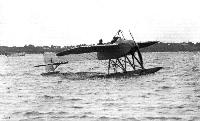 |
Журнал - Flight за 1913 г.
|
| THE ADMIRALTY'S BOREL HYDRO-MONO. No. 83. - Gordon Bell in pilot's seat (back), with Lieut. Travers as passenger, after passing reception tests at Calshot.
|
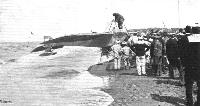 |
Журнал - Flight за 1913 г.
|
| THE PARIS-DEAUVILLE WATERPLANE RACE. - Chemet and his Borel machine immediately after arrival at the control on the beach at Deauville.
|
 |
K.Delve - World War One in the Air /Crowood/
|
| A number of aircraft designs were acquired and tested in the period from 1912 to 1914. One such under British test - the Royal Naval Air Service having an interest in seaplane types - was the Borel monoplane seaplane, which was taken on strength at Calshot in July 1913 and flown by Sub. Lt. J.L. Travers (as serial 83). It was kept on strength until late the following year.
|
 |
J.Davilla - Italian Aviation in the First World War. Vol.2: Aircraft A-H /Centennial Perspective/ (74)
|
| Borel floatplane in French service.
|
 |
L.Opdyke - French Aeroplanes Before the Great War /Schiffer/
|
| The Borel at Monaco.
|
 |
Журнал - Flight за 1914 г.
|
| A Borel waterplane taxying, as seen from behind.
|
 |
Журнал - Flight за 1914 г.
|
| A Borel hydro-aeroplane getting under way.
|
 |
J.Davilla - Italian Aviation in the First World War. Vol.2: Aircraft A-H /Centennial Perspective/ (74)
|
| Borel floatplane in Italian service. (Roberto Gentilli)
|
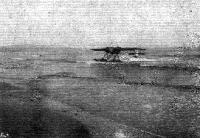 |
Журнал - Flight за 1914 г.
|
| Lieut. Oliver, R.P.C, N.W., arriving at Leven from Dundee on Borel 89 in dirty weather.
|
 |
J.Davilla - Italian Aviation in the First World War. Vol.2: Aircraft A-H /Centennial Perspective/ (74)
|
| Borel floatplane in Italian service. (Roberto Gentilli)
|
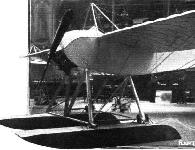 |
Журнал - Flight за 1913 г.
|
| Borel hydro-monoplane.
|
 |
Журнал - Flight за 1913 г.
|
| The Borel exhibited at the Paris Salon.
|
 |
Jane's All The World Aircraft 1913 /Jane's/
|
| Hydro-avion.
|
 |
Журнал - Flight за 1912 г.
|
|
|
 |
Jane's All The World Aircraft 1913 /Jane's/
|
| 1913 Borel. Hydro-avion. By favour of "Flight."
|
 |
Журнал - Flight за 1913 г.
|
| The 80-h.p. Borel hydro-monoplane.
|
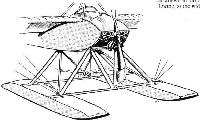 |
Журнал - Flight за 1913 г.
|
| Sketch showing the two main floats, the chassis and the engine mounting of the Borel hydro-monoplane.
|
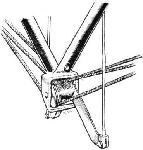 |
Журнал - Flight за 1913 г.
|
| The lower pylon of the Borel hydromonoplane, showing warping gear.
|
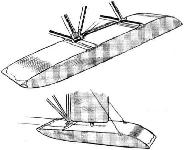 |
Журнал - Flight за 1913 г.
|
| One of the main floats and the small tall float of the Borel hydro-monoplane.
|
 |
Журнал - Flight за 1912 г.
|
|
|
 |
Журнал - Flight за 1913 г.
|
| The tail float of the Borel hydro-monoplane, which is rigidly connected to the rudder and moves with it, thus acting as a water rudder when the machine is "taxying.''
|
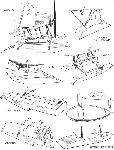 |
Журнал - Flight за 1912 г.
|
| Some of the types of float used on present-day hydro-aeroplanes, as seen at the Paris Aero Salon.
|
 |
Журнал - Flight за 1913 г.
|
| HYDRO-AEROPLANES. - Fig. 5. - Types of Aeroplanes.
|
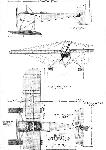 |
Журнал - Flight за 1913 г.
|
| BOREL HYDRO-MONOPLANE. - Plan, side and front elevations to scale.
|






























